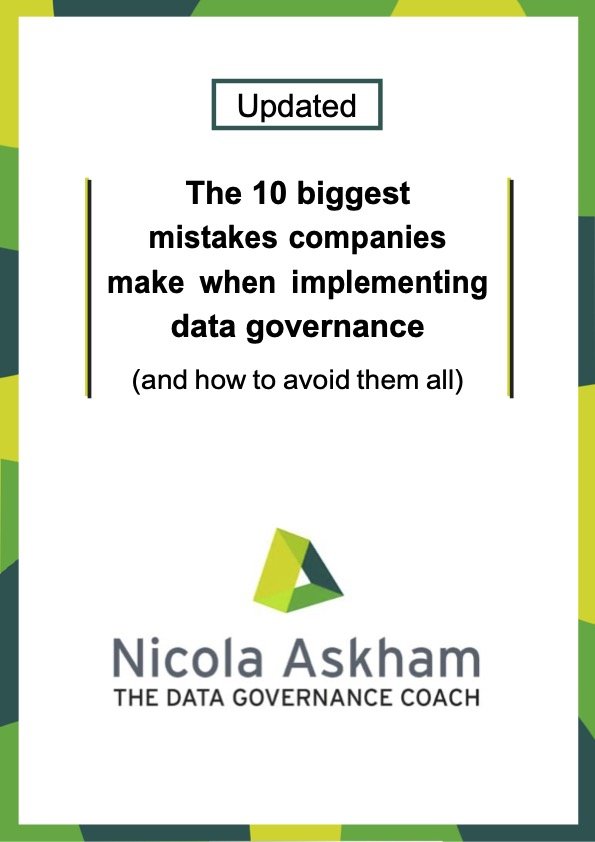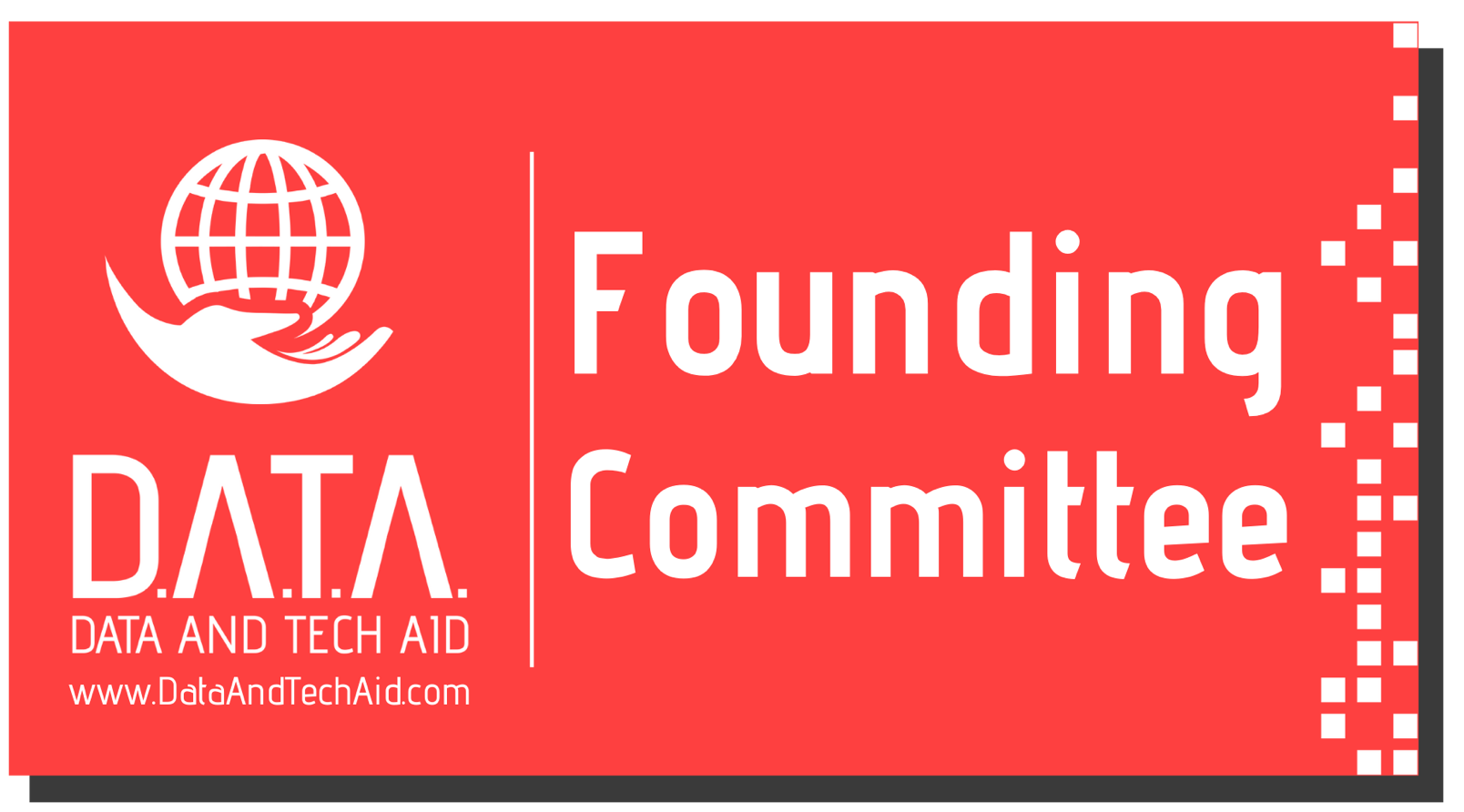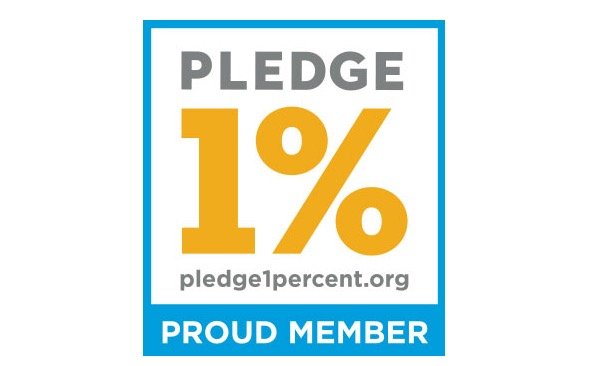The First Six Months of Your New Data Governance Initiative
/If you’re considering starting a Data Governance initiative, you may be wondering what the first six months of work might look like - and that is a very good question because it is challenging… and even though I have done it many times before, sometimes it still surprises me exactly how involved and challenging those first few months can be!
Here I am going to set out roughly what you should expect when on your Data Governance journey – but please remember, this is just a guide based on my many years of experience, every organisation and therefore every Data Governance initiative is different.
Managing expectations
The first thing I was you to remember is that data governance is all about cultural change and therefore you're probably not going to get things within your organisation moving very quickly and one of the very first things you need to do is manage the expectations of whomever you're reporting to and what you're trying to do.
Six months down the line you're not going to have a fully embedded data governance framework, but you will have designed and begun the implementation process.
Early Days
It's important they understand why your company is doing Data Governance, and why your role is being created, because once you understand those drivers it makes it much easier to engage with and sell your Data Governance initiative to senior stakeholders. This is what you will spend some of the first month of your journey doing – establishing and selling your ‘why’.
What we’re talking about is speaking to senior people within your organisation and talking to each individual to understand what their challenges are, what their views on data at your company, what challenges have they got.
Use their feedback to build your framework and work out which bits of Data Governance you need in place and establish which parts you are going to focus on first. So, once you've designed something, the next stage is to start socialising it with the senior stakeholders and get them to really buy into it and let them think that they've helped shape it and their input into it, because it’s going to address the issues they’ve brought to your attention around data.
Once you’ve done that then you need to try and get them engaged and explain to them that it's not going to be quick - you've not got a magic wand that you're going to wave… but you're going to be able to try and put in place some frameworks and processes and roles and responsibilities that should ease the pains of some of those challenges.
Next Steps
In the next stages of your Data Governance journey, you are going to start fleshing out some of those roles and responsibilities and perhaps even start working on a data glossary. This is another great way to ensure team members and senior stakeholders feel engaged in the process, as you’ll need their input to flesh out these things to ensure everyone within the organisation is singing from the same hymn-sheet.
Appointing the wrong people to key roles can cause the wheels to come off any well thought out initiative pretty quickly. So, getting the basics right and the most effective and suitable team in place from the outset will stand you in good stead for successful data governance implementation. In order to appoint the most appropriate people to these roles, it is important to understand what they involve and what their responsibilities will be.
From the top to the bottom of an organisation, it is crucial to your data governance initiative that you identify fit and proper people to take on each of these important roles and that they also understand what role each other plays in the big picture.
Again, getting the basics right and the most effective and suitable team in place from the outset will stand you in good stead for successful data governance implementation.
Now, this blog is titled ‘What to Expect in the first SIX months of your Data Governance initiative’ and you are probably wondering why the creation of these things would take up such a large chunk of time and it is understandable that people look for ways to quicken this process up. One of the ways I am often asked if this can be done is by fast-tracking the creation of items like a data glossary by using standard definitions.
However, it’s not a part of the process that can be skipped or glossed over, so to speak. Part of the reason for this is that organisations, even those within the same industry, very rarely use the same terminologies in exactly the same way. This means there is no bank of standard definitions to pick and choose from; what works for one will very rarely work for the next. Only by creating your own data glossary can you be sure that everyone fully understands the definitions within it.
Moving On
The next step may possibly be to implement a data quality issue resolution process because whilst you're doing the initial engagement, maybe creating conceptual data models, people will be starting to tell you anecdotes - their data quality horror stories - and this is a great time to start identifying where some of your biggest quality issues lie and begin logging which of them need investigating and fixing.
You're not going to solve everything in six months, but at the very least, I would start logging issue and once I've designed my process for investigating and resolving them, I would roll the process out on a phased basis for key consumers of data first.
Full Circle
You may not feel like this is very much to have achieved in six months, but trust me, from my years of experience I can assure you it is. And to bring you full circle, please remember – you MUST manage both you and your organisations expectations when it comes to the early phases of implementing your Data Governance initiative.
You're dealing with people and organisational change. It's going to take time and don't underestimate the amount of energy and effort it will take. I think a lot of people just assume that they can sit at their desk, design a framework, send it out and people will start doing things.
It takes a huge amount of effort and energy and preparation. It's a standing joke that my husband believes that what I do is go to meetings! In reality what I'm doing is meeting people and trying to influence them to change their behaviours - and I'm not going to do that sitting at my desk sending out emails.
At the end of six months, if you can have designed your data governance framework perhaps created a some conceptual data models and use that to identify and agree data owners, you'll be doing really well.
Don't forget if you have any questions you’d like covered in future videos or blogs please email me - questions@nicolaaskham.com.
Or if you would like to know more about how I can help you and your organisation then please book a call using the button below.









